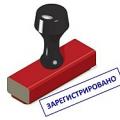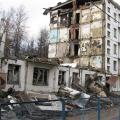Although the service life of piston rings is 60,000 - 80,000 km of vehicle mileage, it is recommended to replace the piston rings in all cases of engine disassembly with mileage of more than 20,000 km. This, on the one hand, will eliminate the need to re-disassemble the engine after a relatively short mileage of the car, and on the other hand, it will be a preventative measure to increase the overall service life of the engine.
If the cylinder mirrors have minor wear and do not require repair, then repair rings can be used instead of the previous piston rings normal size or increased in diameter by 0.25 mm. The choice of one or another ring is determined by the size of the gap in the lock, measured at the ring installed in the cylinder in which it will work. Normal size piston rings can be used if the gap in their lock does not exceed 0.75 mm. Otherwise, you need to use rings increased by 0.25 mm, ensuring gaps in their locks of at least 0.4 mm. To do this, it is allowed to file the joints of the lock.
In cases where the cylinder mirrors require repair, the old piston rings are replaced with repair rings having increased outer diameters.
Table. Piston ring kits for repair (quantity per engine)
The table shows the numbers of sets of repair piston rings (for spare parts) of both normal and repair sizes. At the same time, rings of normal size and those enlarged by 0.25 mm are designed to work in cylinders whose mirrors do not require repair. Accordingly, rings increased by 0.5; 1.0; 1.5 mm, intended for cylinders repaired by grinding or boring. These rings are installed on enlarged pistons of the same size as the repair rings.
Table. Repair dimensions of cylinders
Table. Main parameters of piston rings of normal and repair sizes
| Options | Compression rings | Oil scraper rings | |
| upper and middle | lower | ||
| Height, mm | 2,173-2,185 | 2,165-2,185 | 3,97-3,99 |
| Radial thickness, mm | 3,2-3,4 | 3,2-3,4 | 3,2-3,34 |
| Gap in the lock of a ring installed in a caliber having an internal diameter D, mm | 0,41-0,76 | 0,41-0,76 | 0,41-0,76 |
| The difference in diameters in directions A A and B B when the ring is compressed with tape until a gap in the lock is 0.41-0.76 mm | 0,2-0,6 | 0,2-0,6 | 0,2-0,6 |
| Elasticity of the ring compressed with tape until a gap in the lock is 0.41-0.76 mm, kg | 1,3-1,8 | 1,3-1,8 | 1,4-2,0 |
The geometric parameters of the piston rings are given in the tables above. In all cases of replacing piston rings, it is necessary:
- In the two upper grooves on the piston bottom, install compression rings that have a groove on the inner cylindrical surface facing towards the piston bottom.
- Install a compression ring with a groove (on the outer cylindrical surface) facing the piston skirt into the third groove on the piston bottom.
- Install the oil scraper ring into the fourth groove on the piston crown.
- After replacing the rings, you must follow the engine break-in rules.
(be the first to rate)
Purpose of piston rings
Piston rings are designed to ensure tightness of the intra-cylinder space, i.e. to prevent gases from escaping from this space into the engine crankcase. At the same time, the piston rings remove most of the heat perceived by the piston crown into the cylinder walls and prevent oil from the engine crankcase from penetrating into the cylinders.
In modern high-speed engines with a high compression ratio, three types of piston rings are used:
- Compression piston rings
- Oil control piston rings
- Compression and oil scraper piston rings (combined)
Compression rings. Compression piston rings operate under very difficult conditions, they are exposed to high temperatures, operate in conditions of semi-fluid friction with high variable sliding speed, and are also exposed to significant gas pressure forces, internal elastic forces and friction forces. Compression rings must prevent exhaust gases from the combustion chamber from entering the crank chamber.
To ensure the necessary tightness, a minimum gap between the piston and the cylinder wall, the presence of a stable oil film in this gap, and high-quality surface treatment of the cylinder and piston are required. Compression rings seal the piston by creating a labyrinth and pressing the rings against the surface of the cylinder. Passing through this labyrinth, consisting of end and radial gaps between the rings and the walls of the annular grooves, the gases gradually expand, as a result of which their pressure and flow rate decrease.
Oil scraper rings. The purpose of their work is to minimize oil consumption, with constant and sufficient lubrication of sliding parts and at the same time minimal gas permeability. Due to pump action compression rings, as well as vacuum in the cylinder, during suction, oil enters the chamber, where it partially burns. Oil scraper rings remove excess oil from the cylinder walls and prevent, as far as possible, lubricating oil from entering the combustion chamber.
Compression and oil scraper rings (combined). Compression and oil scraper rings combine the main function of compression and oil scraper rings, which means they basically prevent exhaust gases from entering the crank chamber and remove excess oil from the cylinder wall.
| picture of rings | description of piston rings |
| R-Cylindrical compression piston ring. ET-Semi-trapezoidal compression piston ring. T-Trapezoidal compression piston ring 6º/15. |
|
| M-Conical piston compression ring. S.M.-Conical piston compression ring with a reduced angle of inclination of the working surface. N-Scraper compression piston ring. N.M.-Scraper conical compression piston ring. |
|
| S-Oil scraper piston ring with slots. | |
| G-Oil scraper piston ring with parallel chamfers. | |
| D-Oil scraper piston ring with converging chamfers. | |
| SSF-Box-shaped slotted oil scraper piston ring. | |
| GSF- Oil scraper box-shaped piston ring with parallel chamfers with a twisted spring expander. | |
| DSF-Oil scraper box-shaped piston ring with converging chamfers and a twisted spring expander. | |
Many drivers are familiar with the principles of operation of an internal combustion engine. It contains many components that determine the normal functioning of all systems of the unit. For example, such seemingly insignificant parts as piston rings perform a fairly important function in the operation of the engine.
If these parts are worn out, this immediately affects the performance of the engine, and the consumption of fuel and engine oil increases sharply. But in order to install new rings yourself, you need to understand their types and features. If, unknowingly, you put a kit of the wrong diameter on the piston or install the parts in the wrong order, this may result in the need for a major engine overhaul.
In this article we will look at what types there are, what “thermal clearance of piston rings” is, how to make a mandrel for installing them with your own hands and some other points.
Purpose of piston rings
We will not go into detail about the principles of operation of an internal combustion engine. We will only touch on the issue of connecting the pistons and the engine cylinder. As you know, it is airtight. However, the pistons easily slide along the inner rings of the cylinder, preventing gases from the above-piston space from penetrating into the gap between the two surfaces into the crankcase of the unit.
However, some gas leakage still occurs even on a fully functional engine, but with high-quality rings it is an acceptable norm and cannot in any way affect the operation of the unit. When these piston parts wear out significantly, the amount of gases entering the crankcase increases.
But there is another purpose for performing a number of such functions:
- hermetic connection between the surfaces of the pistons and the cylinder walls;
- ensuring the required amount of oil on the cylinder walls and preventing it from entering the combustion chamber;
- The rings conduct heat from the pistons to the cylinder walls, which prevents overheating and corrosion.
It is not difficult to guess that the pistons perform their task under extremely aggressive conditions. On the one hand, these are extreme temperatures that arise during the operation of the unit. On the other hand, there are conditions of oil starvation in the upper part of the piston. These problems are solved by selecting materials for all types of rings and their different shapes.
Important! High-quality piston rings should be fairly narrow. Experts say that the thinner the ring, the more effectively it will prevent piston vibrations at high engine speeds. In addition, they cope better with friction during the piston stroke.
But if the engine has average power, then regular, cheaper wide rings will be sufficient.
Piston ring design
On most car models, three rings are used inside the engines for each piston. They have a diameter larger than the size of the piston itself. Part of each of them has been cut out. This cutout is called a lock.
They are installed on the piston in such a way that the locks are not located at the same level. These slots are the distance between the ends of the open rings. Locks are available exclusively on all types of these parts. They are designed to compensate for thermal expansions that occur during the interaction of internal engine parts.
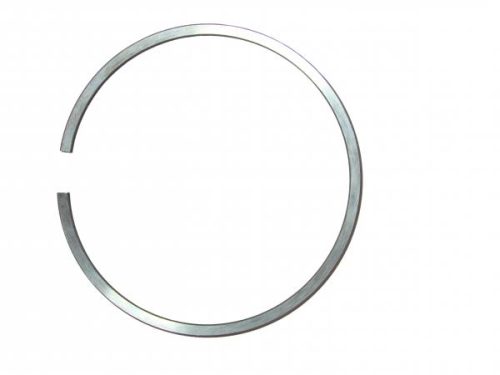
Everyone knows that when metal is exposed to high temperatures, it tends to expand. If the rings had a monolithic design, they would increase the load on the pistons and cylinders when heated.
Why is thermal clearance needed in piston rings?
It is known that in the process of moving the piston, it perceives enormous pressure. This pressure is transferred to the crankshaft. It is the presence of a gap in the structure that allows this pressure to be transmitted as much as possible and its value fully utilized.
In addition, the thermal gap ensures minimal contact between the surfaces of the piston and cylinder. Otherwise, these parts would be subject to increased wear. Another equally important function is to provide surfaces with an optimal amount of oil lubricant. Oil penetrates into the gaps, but does not enter the combustion chamber.
Important! The required thermal gap should be in the range of 0.6-0.3 mm. In addition, care should be taken to ensure the permissible lateral clearance between the ring and the piston wall. The norm is a distance of 0.08-0.04.
It is the gaps that ensure effective heat removal from the surfaces of parts. In this case, they are used to compensate for excess temperature effects. If the above parameters are not provided, the engine will not produce the expected characteristics.
Types of piston rings

Depending on their purpose, piston rings are divided into the following types:
- compression;
- oil scraper
Previously, a large number of rings were installed on the pistons of old engines with low power ratings. Now, most car models use three rings. They are installed in the following order.
- Upper compression. It has a molybdenum anti-wear insert.
- The second is compression.
- Oil scraper.
The oil scraper ring consists of three parts. These are the upper and lower oil scraper plates, and between them there is a tangential expander.
This is exactly what a set of piston rings looks like for modern gasoline engines. Depending on the year of manufacture of the vehicle, other sets of parts may be used.
Compression piston rings are designed to seal the surfaces of the piston and cylinder, they also prevent the penetration of gas into the combustion chamber and provide heat removal.
These types of parts differ from each other in one way or another. It is also worth considering the fact that various manufacturers can change the design and material of the rings, thus increasing their strength and improving the performance of the unit.
Materials used for manufacturing
As already mentioned, their service life and performance indicators will depend on the material of these parts. They can be made from the following alloys:
- cast iron. Its structure allows it to retain engine oil, significantly increasing the service life of the part. As a rule, cast iron is coated with chrome;
- ductile cast iron, which is a derivative of ordinary cast iron. The material retains all the basic properties of the alloy, but at the same time has good ability to elastic deformation. This greatly simplifies installation;
- stainless steel began to be used only in Lately. It contains a larger amount of chromium, in addition, it withstands temperature loads better than cast iron;
- Cast iron parts are coated with molybdenum, which significantly increases their performance characteristics and extends their service life. Cast iron parts with molybdenum coating have recently been used most often.
Upper compression
There are quite a large number of configurations of these parts, but their differences are quite difficult to discern. For example, sometimes they have a slightly twisted shape.
The main purpose is to accelerate the running-in of the surfaces of the piston rings with the cylinder walls. If the part has a slightly twisted structure, then its surfaces quickly become compacted in the cylinder groove.
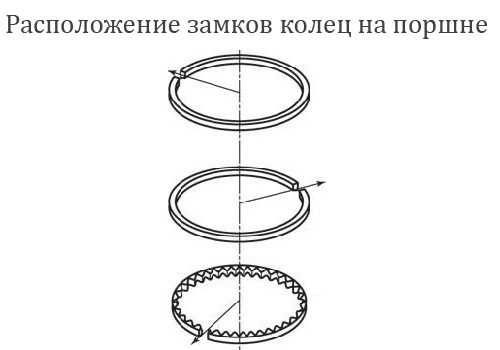
Lower and oil scraper
The second compression usually has a larger seal with the groove surface, and its main function is to keep gases out of the chamber and prevent oil from entering the combustion chamber. Otherwise, detonation may occur. It essentially normalizes the amount of oil between the upper compression and oil scraper rings.
The latter completely removes oil from the surface of the cylinder walls.
Installation Tools
It should be taken into account that without the use of special tools and by manually releasing parts, their service life is significantly reduced. To remove the old part and install a new one on the cylinder, a piston ring puller is used. It can have different designs:
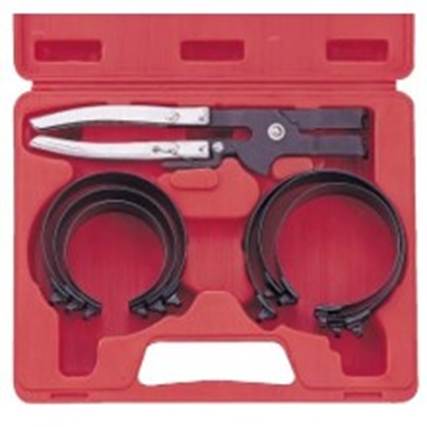
In order to correctly install the piston rings, it is necessary to comply with the norm of their pressing against the piston walls. A special mandrel is used for this.
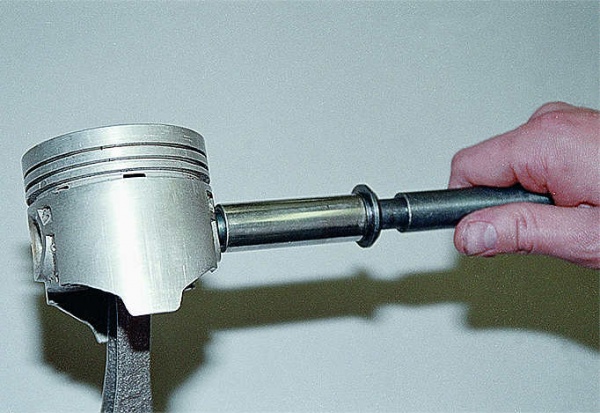
Do-it-yourself piston ring adjustment is a fairly common device. You can do it according to this scheme:

Thus, installing piston rings with your own hands is not a difficult task and every car enthusiast can do it, subject to certain rules.
The video provides an overview of piston rings:
Piston rings are open rings that are seated in the piston grooves with a small gap. Let's talk about engine piston rings, what they are like and their main purpose.
Piston rings are divided into compression and oil scraper rings according to their purpose.
Compression rings prevent the rush of gases from the combustion chamber into the crankcase. The free outer diameter of the ring is larger than the inner diameter of the cylinder, so part of the ring is cut out. The cutout in the piston ring is called the lock.
Oil scraper rings prevent the penetration of oil from the crankcase into the combustion chamber, removing excess oil from the cylinder wall. They are installed below the compression level. Unlike compression rings, they have through slots.
Some manufacturers, such as BMW, initially design engines with piston rings due to the special design of the piston rings. This is done, firstly, to reduce friction losses; secondly, for the sake of less wear on the cylinder-piston group; thirdly, the oil is refreshed within a long service interval.
What are engine rings made of?
One of the materials used for piston rings is cast iron. Its structure allows it to retain oil, reducing wear. A derivative of ductile cast iron, ductile cast iron, is also widely used. It has most of the qualities of cast iron and can be elastically deformed, making it easier to install the rings.Stainless steel piston rings are an improvement over chrome plated cast iron rings. Essentially, stainless steel is a material that contains large amounts of chromium. And such rings have properties similar to those of chrome-plated rings. Stainless steel also has the ability to withstand high temperature, superior to chrome-plated cast iron.
To increase the service life of the rings and ensure their rapid break-in molybdenum rings were created. Its base is made of cast iron with a molybdenum coating. Molybdenum shares many of the anti-wear properties of chromium and in some cases can be more resistant to wear. Over time, molybdenum rings have become a staple in engines because they are durable, relatively easy to break in, and more reliable.
Upper engine compression rings
There are many top compression ring configurations and the differences are difficult to discern. For example, the ring may have a slight intentional twist. In other words, the top and bottom surfaces of the ring do not lie flat in the ring groove, but are slightly inclined, with only the top or bottom edge of the face contacting the cylinder bore.The rings are designed to speed up the break-in of the piston ring surfaces and cylinder walls and help seal the ring at the top and bottom of the ring groove. The amount of twist in the ring is very small and is usually done by grinding a chamfer on the inside edge of the ring.
Second compression and oil rings of the engine
The main task of the second compression ring- providing additional sealing after the upper oil scraper ring. Because of this, the second ring usually only "monitors" the gases that pass by the upper ring, and the pressure and temperature are different from the values for the upper compression ring. Accordingly, the materials and design of the second ring are less critical.However, the second ring has an important additional function: it assists the oil scraper ring, acting as a “scraper”, preventing excess oil from entering the combustion chamber and causing detonation.
Some second compression rings are specifically made to be beveled to aid the operation of the oil control ring, with the bevel being least at the top edge of the ring. It tends to move on top of the oil as it moves up in the cylinder and will remove oil as it moves down. If oil removal is an issue, then this type of ring will force the oil out, although a second flat face ring along with a "normal" force oil scraper ring is all that is needed.
The second compression ring without gap is a new design. The term “without clearance” used here is somewhat incorrect, since it is generally impossible to make a ring completely without clearance - it will be impossible to install it on the piston, and the ring will be unadjustable even with the smallest deviations in the shape of the cylinder bore from the circle. Despite this, the ring can be made without any visible gap for gases passing by the ring.
By using these rings, the engine will break in faster during the break-in process and will produce slightly more power when tested on the bench.
The need for backlash-free rings depends on how other rings perform. While the top compression ring provides a good seal, a backlash-free second compression ring is less important. In reality this is not the case and a second backlash-free compression ring may be the answer to more power.
Oil scraper rings are important for the functioning of engines, especially when using low-octane gasoline. Engine oil contaminates the combustion chambers and piston heads, which will cause a decrease in power.
When studying the principles of operation of an internal combustion engine, it was noted that the sliding connection between the piston and the cylinder is sealed, that is, gases under pressure in the space above the piston do not penetrate between the piston and the cylinder walls into the engine crankcase. The main purpose of piston rings is to ensure acceptable tightness.
It should be noted that a small part of the gases from the combustion chamber still penetrate into the internal space of the crankcase, even of a new, completely serviceable engine. A seal using piston rings is technically called a labyrinth type seal; in seals of this type, some gas leakage always occurs. But this leak on a working engine usually lies in the range of 0.5 - 1.0%.
The gases found in the engine crankcase are called crankcase gases. As the cylinder-piston group of the engine wears out, the amount of crankcase gases increases.
In addition to sealing, piston rings perform two more tasks. They adjust the amount of oil on the cylinder walls necessary to lubricate both the rings themselves and the piston, and remove heat from the piston to the cylinder walls.
Purpose of piston rings:
Ensuring tightness between the piston and cylinder walls.
Regulating the amount of oil needed to lubricate the piston-cylinder connection and prevent oil from entering the engine combustion chamber.
Heat removal from the piston to the cylinder walls.
The piston rings perform these three tasks under very difficult conditions under the influence of high thermal and mechanical loads. Thermal stress of the piston rings occurs under the influence of hot working gases and under the influence of friction of the rings against the cylinder walls, which occurs under conditions of oil starvation in the upper part of the piston.
The successful solution of these problems is achieved both through the design of the rings and the correct selection of the material for making the rings.
Ring type
Piston rings are divided into two types:
Compression
Oil scrapers
Piston rings - diagram
1. First (upper) compression ring
1.1. Molybdenum anti-wear insert
2. Second compression ring
3. Oil scraper ring:
3.1. Upper oil scraper plate
3.2. Tangential expander
3.3. Lower oil scraper plate
Piston with piston rings
A photograph of a cross-section of a modern gasoline engine piston with a typical set of piston rings installed on it in accordance with the diagram given in the top picture.
Compression rings provide the necessary tightness, and oil scraper rings regulate the amount of oil on the cylinder walls. It is precisely this that is adjusted, and not completely removed, since complete or too much oil removal will lead to oil starvation of the connection of the piston with the cylinder walls in the upper part of the piston and subsequent jamming of the piston in the cylinder.
Previously, engines were low-speed, and the number of piston rings on one piston reached 5 - 7. But almost all modern gasoline engines and high-speed automobiles diesel engines They have only three piston rings on one piston - two compression rings and one oil scraper ring.
Although the pistons of engines of forced sports cars, constantly operating at high speeds, may have only two rings. And the pistons of diesel car engines, to facilitate starting, may have four rings, three of which are compression rings.
The ring installed in the groove of the piston located in the engine cylinder must accept absolutely round shape(this is done if the cylinder liner itself is not deformed) and be pressed against the cylinder surface along the entire outer circumference of the piston ring. To ensure this, the elastic piston ring is made not in the form of a regular circle, but in the form of an arc of variable radius, larger than the diameter of the cylinder and having a sufficiently large gap (1) between the ends of the ring in the free state. When installed in the cylinder, the ring is compressed and the gap (2) in the ring lock becomes 0.15 ÷ 0.5 mm. The exact and maximum permissible value of this gap is indicated in the technical documentation of the engine. Ensuring a regulated gap value is very important; an increased gap contributes to the breakthrough of gases into the engine crankcase and a decrease in power. But even more dangerous is the reduced clearance in the piston ring lock. During operation, as a result of heating, the ring expands and with a reduced gap, jamming of the piston ring in the cylinder may occur, which will lead to the formation of scuffing on the cylinder surface, breakage of the inter-ring partitions of the piston, or breakage of the ring itself. Therefore, a slight increase in the gap is acceptable, but a decrease in the gap in the piston ring lock is unacceptable.
Leading manufacturers of piston rings produce rings with a gap that gradually decreases after 0.1 mm; there can be up to 15 such selected sizes.
No end clearance while reducing ring height
Some piston ring manufacturers produce "no clearance" piston rings. Of course, it is impossible to change the natural property of metals to expand with increasing temperature; a ring installed in an engine cylinder without clearance will certainly jam. But a lot can be solved with a successful design. In this case, the piston ring consists of two flat rings mounted on top of each other and rotated 180º relative to each other. In this case, the upper ring is shaped like the letter “L”, and the lower ring is inserted into the recess of the upper ring, due to which the height of such a ring is no more than the height of a standard ring.
Once upon a time, the piston ring locks of old low-speed engines had a complex shape to reduce gas breakthrough through the ring lock, but in modern high-speed engines, gas breakthrough through the ring lock is insignificant. Therefore, modern rings have only a rectangular lock shape.
Correct installation of piston rings
The variable arc radius of the piston ring is not taken arbitrarily, but is calculated to provide the necessary diagram of the force of pressing the ring against the cylinder walls. During operation, the piston ring wears unevenly. As a result of experiments, it was determined that the ring wears out most intensively in the area of the lock. Therefore, the initial increase in the ring pressing force in the lock area increases the service life of the ring.
But the precisely calculated ring force diagram can change as a result of unprofessional installation of the ring on the piston. Modern, very thin compression piston rings must not be installed on the piston by hand. To do this, it is necessary to use a special device that ensures uniform expansion of the ring around the entire circumference and limits the maximum expansion.
Installing the ring by hand, with increased and uneven expansion, significantly reduces the service life of the ring.
Pressing the compression rings against the walls of the cylinder liner
This figure shows that gases from the combustion chamber, through the gap between the piston fire zone and the cylinder wall and through the gap between the partition wall and the piston ring, enter the internal cavity of the piston ring. In this case, the pressure in the internal cavity of the upper compression ring is almost equal to the pressure in the combustion chamber.
Due to the gas pressure on the inner surface of the ring, the piston ring is additionally pressed against the cylinder walls. Some of the gases also enter the internal cavity of the second compression ring. Since the first compression ring throttles the gas pressure, the pressure in the internal cavity of the second compression ring can be equal to 30 - 60% of the pressure in the internal cavity of the first compression ring.
Taking into account the fact that all processes in the engine occur quite quickly, the pressure from the internal cavities of the piston rings does not drop until the next stroke of the power stroke; this phenomenon is called pressure accumulation. Pressure accumulation ensures acceptable operation of piston rings that have partially lost their elasticity as a result of aging or overheating. Piston rings that have lost elasticity will work satisfactorily at high engine loads, but when the engine operates at low loads, the piston rings will not provide the necessary seal. Therefore, the piston rings of a serial passenger car can be considered serviceable, as they provide pressure against the cylinder walls due to their own elasticity.
Some piston ring manufacturers claim that up to 90% of the pressing force on the piston rings comes from the pressure of the engine's working gases. Perhaps rings with similar technical characteristics are suitable only for special sports engines that constantly operate in the range of high speeds and high loads, but it is unlikely that such a ring will work successfully in the engine of a production car. Specially prepared piston rings, like many other engine parts, can improve engine performance at strictly defined speed and load conditions. But at the same time, it will significantly worsen engine performance in other modes.
A very important operational dimension is the lateral clearance between the ring and the piston groove, since the pressure in the piston groove depends on it. On average, this gap is 0.04 ÷ 0.08 mm. The size of this gap also determines the shock loads on the partitions of the piston rings and, accordingly, the noise of the engine, which increases as the gap increases, or the likelihood of jamming (loss of mobility) of the piston rings as the gap decreases.
Many auto mechanics believe that pistons cannot be used further due to wear on the piston guide (skirt), but usually the wear on the piston guide is insignificant. Of course, if the piston did not operate in oil starvation mode, and scuff marks did not form on the surface of the piston and cylinder walls.
In fact, the piston is often rejected due to unacceptable wear of the upper compression ring groove.
During production, both the height of the piston rings and the height of the piston groove have some variation, therefore, to ensure the required clearance, it is sometimes possible to select a piston ring of the required height.
The shape of the second compression ring is different from the shape of the first compression ring. Sometimes due to the peculiar shape outer surface the second compression ring is called the scraper ring
This ring works not only as a compression ring, but also participates in regulating the amount of oil on the cylinder walls, that is, it partially performs the task of an oil scraper ring. The lower part of the working surface of the second ring is made in the form of a scraper, which, when the piston moves downward, removes excess oil from the cylinder walls. The lower compression ring operates in much lighter conditions. Both the temperature in the ring zone and the gas pressure on the ring (respectively the force of pressing the ring against the cylinder wall) are significantly lower compared to similar indicators affecting the upper ring.
Both compression rings may only be installed in one position. The upper surface of the compression piston ring is marked “T”, “TOR” or others. The ring is always installed with this mark facing up. Incorrectly installed piston ring, does not work properly.
Oil scraper rings are installed below the piston compression rings. On the pistons of modern engines passenger cars Only one oil scraper ring is installed. Although older engines, especially those intended for stationary use, used several oil scraper rings.
Oil scraper rings are designed to regulate the amount of oil on the cylinder walls. The Russian proverb doesn’t really apply here: “You can’t spoil porridge with butter.” There should be not as much oil on the cylinder stacks as possible, but exactly as much as necessary. Insufficient oil will lead to oil starvation and, as a result, increased wear of the piston rings, piston and cylinder surface. In some severe engine operating conditions in the presence of oil starvation, scuffing of the piston-cylinder connection can occur, and even complete jamming of the piston in the cylinder.
An excessive amount of oil on the cylinder walls is also undesirable. Excess oil enters the engine combustion chamber through compression rings. Which leads to increased oil consumption, the formation of carbon deposits on the walls of the combustion chamber, valves and spark plug. Carbon deposits from burnt oil in the combustion chamber and on valves significantly worsen some specifications engine. During engine operation, the lubrication system sprays a large amount of lubricant into the lower internal cavity of the cylinder, which is necessary to lubricate the piston pin and cool the piston.
When the piston moves down, oil scraper ring its edges collect excess oil from the cylinder walls and direct it through the drainage holes in the piston groove into the internal cavity of the piston. The oil then flows into the oil pan, returning to the engine lubrication system.



